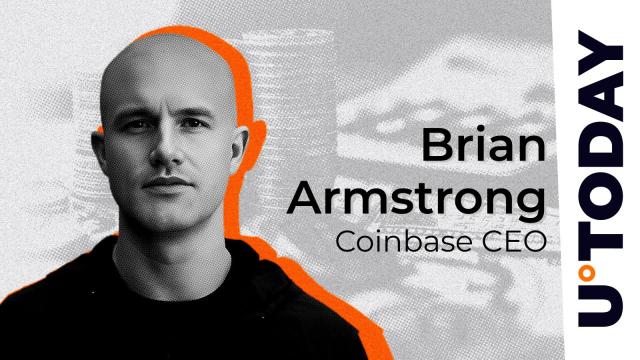This is a brief version of the newsletter we published on Decentralised.co. We studied how crypto venture capital (VCs) firms choose to co-invest and their historical investment strategy patterns.
As an asset class, venture capital follows an extreme power law. However, the specific degree of this has not been deeply studied, as we are always chasing the latest narrative. In the past few weeks, we created an internal tool to track the network of all crypto venture capital firms. But why do this?
The core logic is simple. As founders, understanding which VCs frequently co-invest can save you time and optimize your fundraising strategy. Each deal is a fingerprint. When we visualize them on a chart, we can reveal the story behind them.
In other words, we can trace the nodes responsible for most capital raising in the crypto field. We are trying to find the ports in the modern trade network, not unlike merchants from a thousand years ago.
We believe this is an interesting experiment for two reasons.
1. Our VC network is somewhat like Fight Club. While no one is fighting (currently), we also don't often talk about it.
This VC network includes about 80 funds. In the entire crypto VC field, about 240 funds have deployed over $500,000 at the seed stage. This means we directly contacted one-third of them, and almost two-thirds read our content. This is an impact I never anticipated, but such is the fact.
However, it is usually difficult to track who is actually deploying funds where. Sending founder updates to every fund becomes noise.
This tracker emerged as a filtering tool to help us understand which funds have deployed capital, in what areas, and with whom.
2. For founders, understanding where capital is deployed is just the first step. More valuable is understanding the performance of these funds and who they typically co-invest with.
To this end, we calculated the historical probability of a fund's investments receiving follow-on funding, although this becomes blurry in later stages (such as Series B), as companies typically issue tokens rather than raise traditional equity.
Helping founders identify which investors are active in crypto VC is the first step. Next is understanding which capital sources perform better. Once we have this data, we can explore which funds co-invest to achieve the best results.
This is certainly not rocket science.
No one can guarantee getting a Series A round just because someone wrote a check. Just like no one can guarantee marriage after the first date. But understanding the situation you're about to face is undoubtedly helpful, whether in dating or venture capital.
Building a Successful Architecture
We used some basic logic to identify funds that saw the most follow-on rounds in their portfolios. If a fund sees multiple companies successfully raise funds after the seed round, they might have done something right. When companies raise funds in the next round at a higher valuation, VCs' investments increase in value. Therefore, follow-on funding can be a good indicator of performance.
We selected the top 20 funds with the most follow-on rounds in their portfolios and calculated the total number of companies they deployed at the seed stage. You can effectively calculate the probability of founders obtaining follow-on funding. If a company has 100 seed-stage checks, and 30 of them obtain follow-on funding within two years, we calculate its promotion probability as 30%.
The caveat here is that we limit the time to two years. Typically, startups may choose not to raise funds at all or raise funds after this period.

Even among the top 20 funds, the power law is quite extreme.
For example, raising funds from a16z means you have a one-third chance of raising funds again within two years. That is, for every three startups supported by a16z, one will continue to Series A funding.
Considering that the end of this list has only a 1/16 chance, this is already a quite high graduation rate.
In this top 20 follow-on investment fund list, funds ranked near 20 have only a 7% probability of their invested companies raising follow-on funding. These numbers may seem similar, but in context, a one-third probability is like rolling a die and getting a number less than three, while a 1/14 probability is roughly equivalent to the chance of having twins. These are completely different results, both literally and probabilistically.
Jokes aside, this demonstrates the degree of aggregation within crypto venture capital funds. Some venture funds can design follow-on funding for their portfolio companies because they also have growth funds.
Therefore, they will deploy seed-stage and Series A funding in the same company. When a venture fund doubles down on more shares in the same company, it usually sends a positive signal to follow-on round investors.
In other words, the existence of growth-stage funds within a VC company significantly affects the company's success probability in the coming years.
The long-tail effect of this trend is that crypto venture funds are evolving into private equity investments for revenue-generating projects. We have had theoretical arguments about this transformation. But what does the data really show? To study this, we considered the number of startups in our investor group that obtained follow-on funding. Then, we calculated the proportion of companies in which the same venture fund participated again in subsequent rounds.
That is, if a company raised seed funding from a16z, what is the probability that a16z will reinvest capital in its Series A?

This pattern quickly becomes apparent. Large funds managing over a billion dollars tend to frequently make follow-on investments. For example, 44% of startups in the a16z portfolio that continue to raise more capital saw a16z participate in subsequent rounds. Blockchain Capital, DCG, and Polychain participated in follow-on investments in a quarter of their re-financing investments.
In other words, who you raise funds from in the seed or pre-seed stage is much more important than you might imagine, because these investors are more inclined to frequently support their own companies.
Habitual Co-Investment
These co-investment patterns are summarized from hindsight. We do not mean that companies that do not raise funds from top-tier VCs are doomed to fail. The goal of all economic activity is growth or profit creation. Companies that can achieve either of these will see their valuation rise over time. Of course, this helps improve the chances of success. If you cannot raise funds from this top 20 investor group, one way to improve your success probability is through their network, or in other words, establishing connections with these capital hubs.
The following diagram shows the network of all venture capital investors in the crypto field over the past decade. There are 1,000 investors with about 22,000 connections between them. A connection is formed if an investor co-invests with another. This may look crowded and seem to offer too many choices. However, this also includes funds that have died, never returned funds, or are no longer deploying.

I know, this looks messy.
However, the reality of market development becomes clearer in the following diagram. If you are a founder seeking Series A funding, the pool of funds investing over $2 million rounds is about 50. The investor network that has participated in such rounds is about 112 funds. These funds are gradually concentrating, showing a stronger preference for co-investing with specific partners.
During the financing process from seed round to Series A, you can raise funds from numerous investors. Over time, funds tend to develop a habit of co-investing. This means that when a fund invests in a particular entity, it usually brings along a peer fund, which may be due to complementary skills (such as technical support or market promotion) or based on partnership. To explore how these relationships work, we began investigating co-investment patterns between funds over the past year. For example, in the past year: · Polychain and Nomad Capital had 9 co-investments. · Bankless and Robot Ventures had 9 co-investments. · Binance and Polychain had 7 co-investments. · Binance also had the same number of co-investments with HackVC. · Similarly, OKX and Animoca had 7 co-investments. Large funds are becoming increasingly selective about their co-investment partners. For instance, last year, Robot Ventures participated in three rounds out of Paradigm's 10 investments. DragonFly shared three rounds with Robot Ventures and Founders Fund out of its total 13 investments. Similarly, Founders Fund had three co-investments with Dragonfly out of its 9 investments. In other words, we are gradually entering an era where fewer funds make large investments with fewer co-investors, and many of these co-investors are often well-known funds that have existed for some time. [The rest of the text follows the same translation approach, maintaining the specified translations for specific terms and preserving <> tags.]







